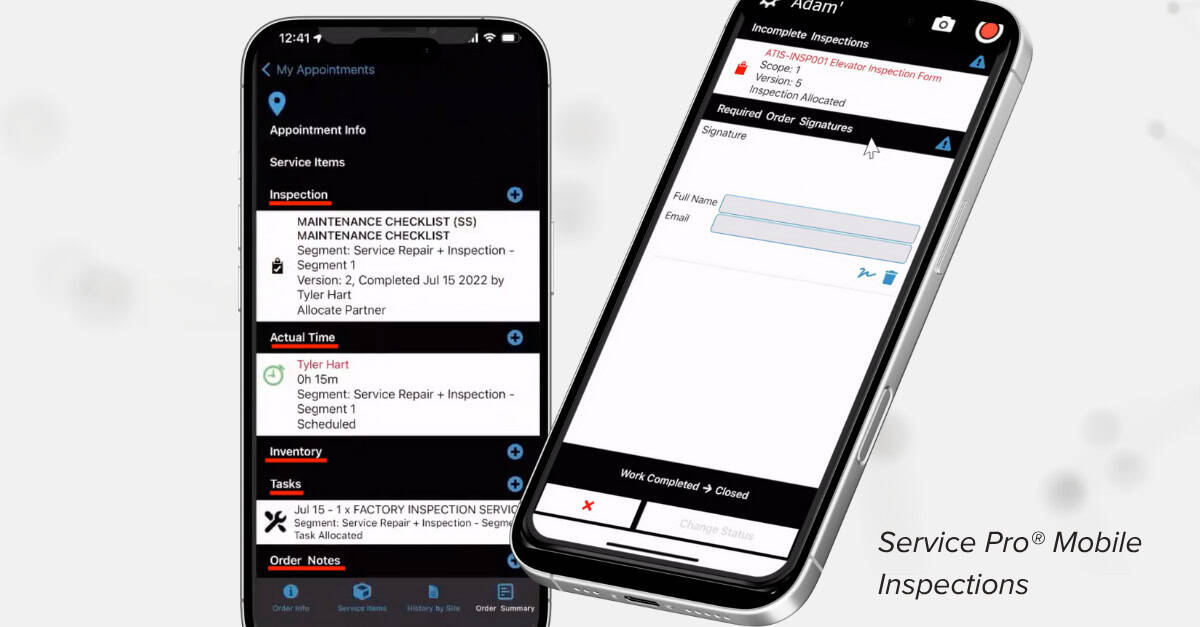The Key to faster invoicing, lower operational costs, and gaining the competitive advantage
Servitization. Predictive maintenance. AI integration. There are plenty of shiny new trends tempting field service organizations. The problem is: where to start?
That’s where field service maturity can help. Field service maturity can be the key to growing your field service business for years to come. The framework offers a step-by-step service transformation that meets you where you’re currently at, and provides a plan that gradually builds your field service technology usage.
With a defined connected service maturity model to ramp up field service results, field service organizations can:
- Collect and process invoices faster
- Reduce operational costs
- Gain the competitive advantage
- And more!
Here’s how:
Faster invoice turnaround
The turnaround time from service to payment is crucial to a field service company’s cash flow. However, manual, paper-based work orders and invoicing can delay payments by weeks or even months.
With connected systems and a mobile field app, field service organizations can achieve a same-day invoicing-to-payment schedule. It all starts with eliminating paperwork in the field.
Leading service businesses empower their field technicians with an offline-capable mobile app integrated with their ERP.
With an easy-to-use mobile app on their devices, field technicians can access their appointment schedule, customer information, service history, and more. This allows them to prepare for appointments in advance, ensuring they arrive on site with the tools, parts, and knowledge needed to get the job done right the first time.
And best of all, the work order information collected by field technicians automatically syncs to the ERP system once back in a service area. Back office staff can process invoices as soon as the work is complete, instead of waiting for technicians to drop off their paperwork at the end of the week (or risk it getting lost in the truck).

Reduce Operational Costs
According to an article from McKinsey, field technicians waste up to 40 percent of their workday on non-value-adding activities. That means nearly half of technicians’ time may be spent on unnecessary manual tasks, like filling out paperwork and calling dispatch to verify appointments.
But what if a field service organization eliminates those manual tasks? Imagine the impact collecting just a couple more billable hours per technician each workday could have.
Technician efficiency in the field is possible with integrated field service technology. With an ERP-connected field service mobile app, technicians can spend more time on value-adding activities, such as inspecting customer equipment, including notes and photos, and scheduling recurring maintenance to better serve customers’ current a future needs.

Gain the competitive advantage
Competition in the service business is fierce; it’s a common challenge that many field service organizations are trying to overcome. According to TSIA, one of the top challenges in field service is keeping up with digital transformation and technology to improve service execution.
“Organizations need to transform their business practices to keep up with changing customer demands and the evolution of the marketplace”. -TSIA
Being open to innovation and the benefits of technology will allow you to make informed, data-driven decisions and pull ahead of your competitors. Integrated field service technology is the next step in this process.
By understanding their service maturity level and making a plan to integrate technology into their service business, organizations can gain the competitive advantage and delight customers with speed, accuracy, and a job well done.
Get on the path to field service growth today
Your Guide to Field Service Maturity will give you and your team everything you need to know about growing your operations, including:
- Digitizing and integrating your service processes for faster invoicing and labor tracking
- Managing and measuring data from the field to improve your KPIs and identify areas for improvement
- Optimizing your service operations using the collected data
- Automating technician assignments, customer notifications, reports, and more to speed service success







